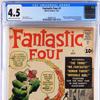The House of Leleu: A Legacy of French Rug Design at Nazmiyal Antique Rug Gallery in New York
- February 18, 2015 07:45

NEW YORK, NY.- The interior design firm Leleu, named for the family who founded it, was one of the most prominent and well-respected design houses of the 20th century. From furniture design to textiles and beautiful rugs, Leleu was known for its chic and modern creations. This week, Jason Nazmiyal, owner of the Nazmiyal Antique Rug Collection in New York, is pleased to announce to the public the recent addition of three Leleu rugs to his vast collection. “This group of Leleu carpets, which we recently acquired from a private estate in Paris, embodies the ideals of Art Deco design. We’re so pleased to have these beautiful rugs as part of our collection,” states Mr. Nazmiyal.
The House of Leleu rose to prominence during the early years of the 20th century, starting in 1909, when Jules Leleu took over his father’s painting company. Jules had been educated at the Beaux-Arts de Bologne, as well as the Gildas School of Applied Arts in Brussels, and had grand plans for the family business. Shortly after assuming his role at the company, Jules added a cabinet making department, which would produce the first furniture designs of the firm. After serving in the French military during World War I, Jules returns to the family business with a renewed interest in furniture design, and decides to make weekly trips to Paris to keep in touch with the most modern ideas passing through the design showcases in the capital city. In the years of the 1920s, Mr. Leleu’s designs gained popularity through their exhibition in Parisian design fairs, and the Leleu firm began to build its client base, enabling the company to establish its first atelier in the city.
In the years that followed, the Leleu design firm gained popularity, respect, and prominent clients in both Europe and the United States, and won many awards for its decoration and design services. As the years passed, the children of Jules Leleu — a daughter, Paule, and two sons, Andre and Jean — would join and expand the family’s business. It was Paule Leleu who established the company’s rug and carpet department in 1935. Modern fine rug making was a difficult market during this time, as many still favored traditional oriental carpets over the new “art deco” styles. However, Paule was firm in her devotion to contemporary styles, and believed that the modern furniture her family was producing deserved to sit atop equally modern carpeting. Paule Leleu designed her carpets with her family’s furniture in mind, which meant that when paired together in the Leleu’s design projects, they created a cohesive and thoroughly modern effect.

Paule Leleu had a passion and deep respect for the creation of carpets, and she spoke often of their importance to creating a pleasing atmosphere, and of their ability to add focus and mood to interior spaces. With Paule at the helm, the carpets created at the Leleu firm became known for their elegance, their modernity, and their crispness of form and line.
Leleu carpets were often very geometric, in keeping with the trends of the art deco movement, and later, the futuristic designs of the mid-20th century. While the large medallions and ornate florals of oriental carpets went out of vogue at the onset of many mid-20th century design trends, the all-over patterns, simple borders, and smart geometry of Leleu carpets made them extremely popular with fashionable clients in Europe and America. Further, the Leleu Firm used a palette of elevated neutrals in their carpet designs — colors like burnt umber and sienna, moss green, charcoal, and rust — colors that remain classic staples of modern interior decorating today.
The smart design sense and eye for color that blessed the Leleu family is the firm’s lasting legacy. Even over fifty years later, the carpets and rugs created by Paule Leleu look elegantly modern — they have proven themselves to be timeless pieces of design.





















